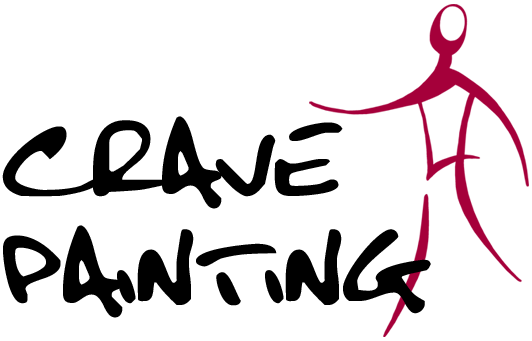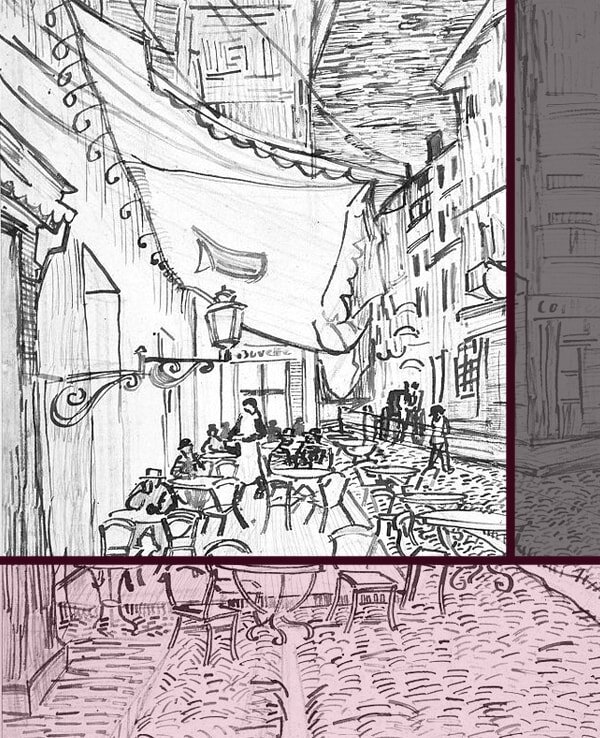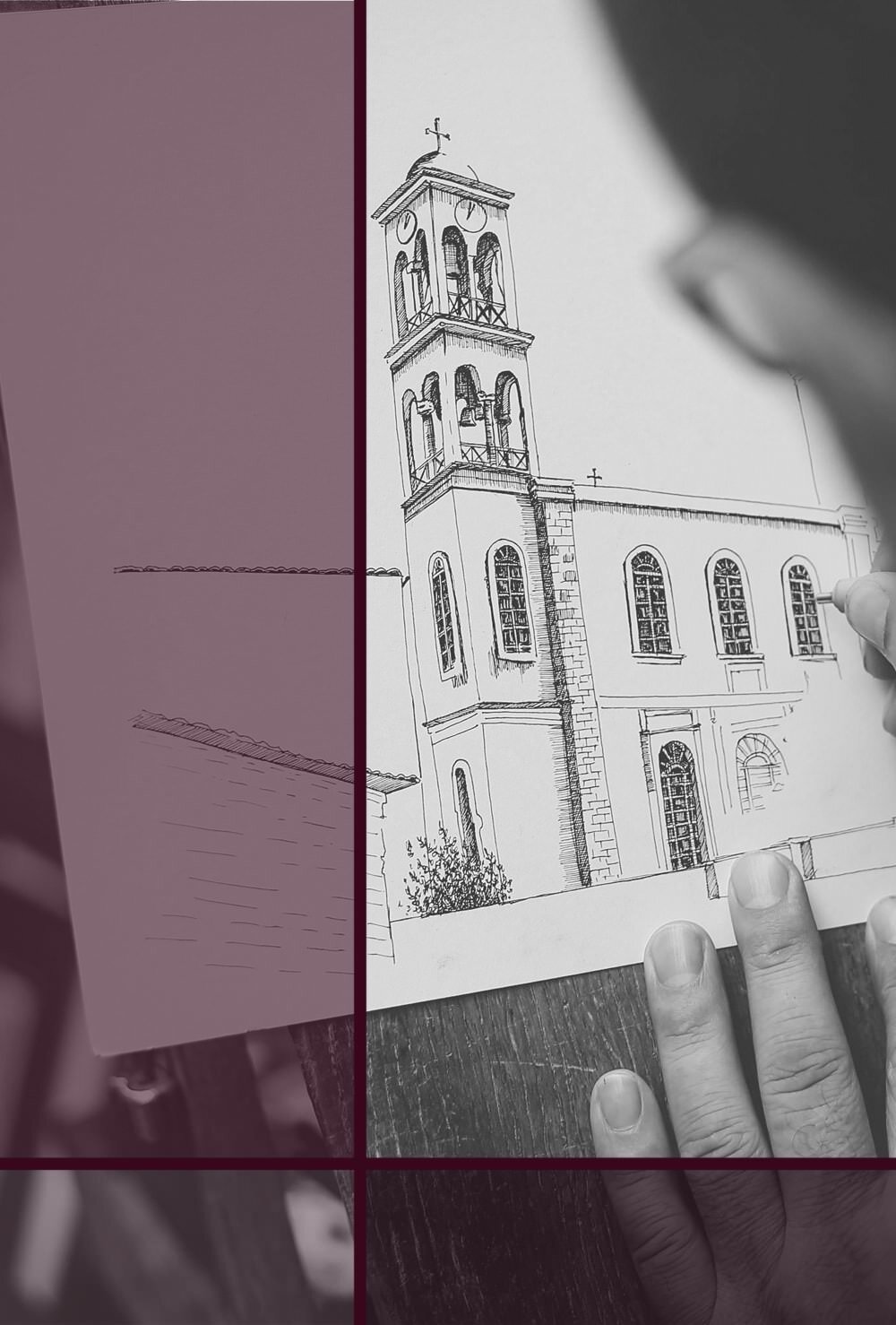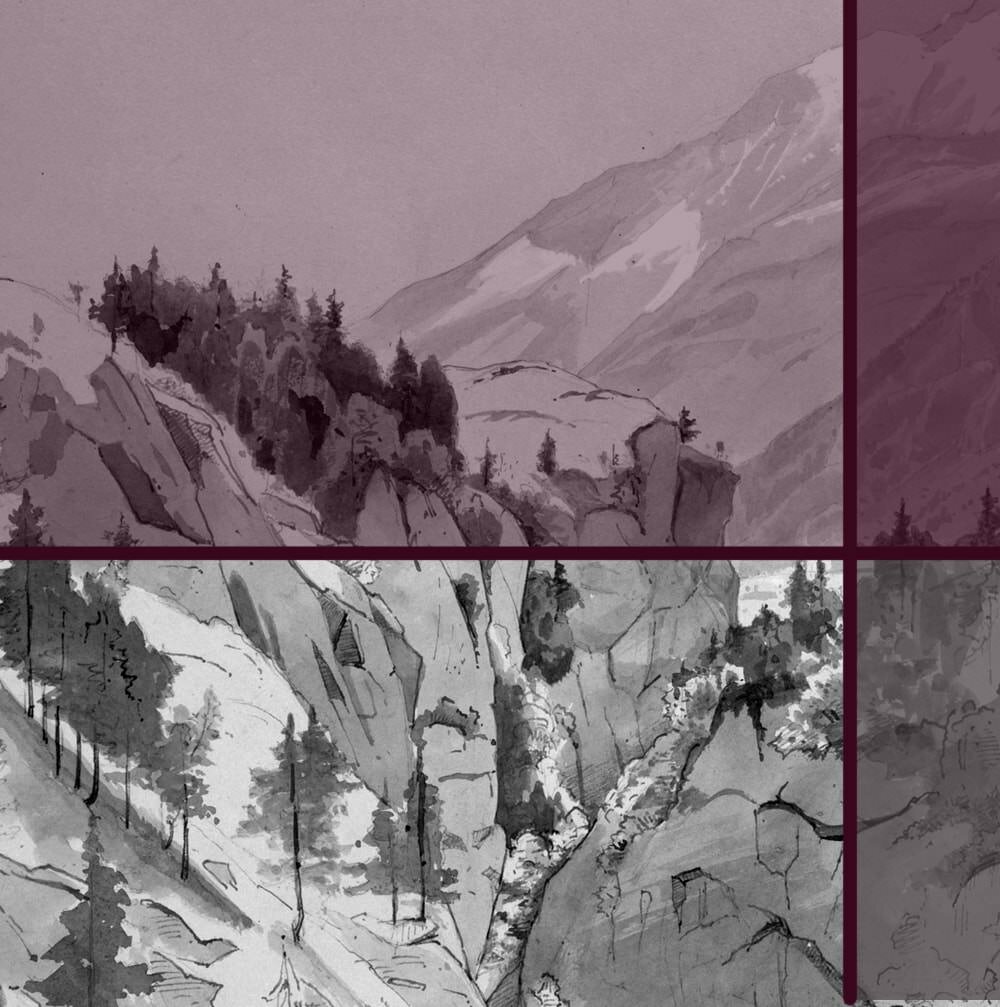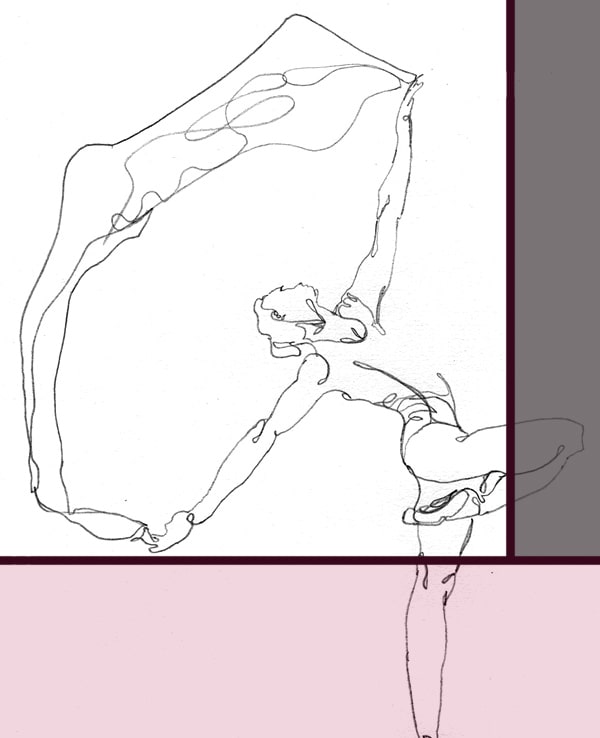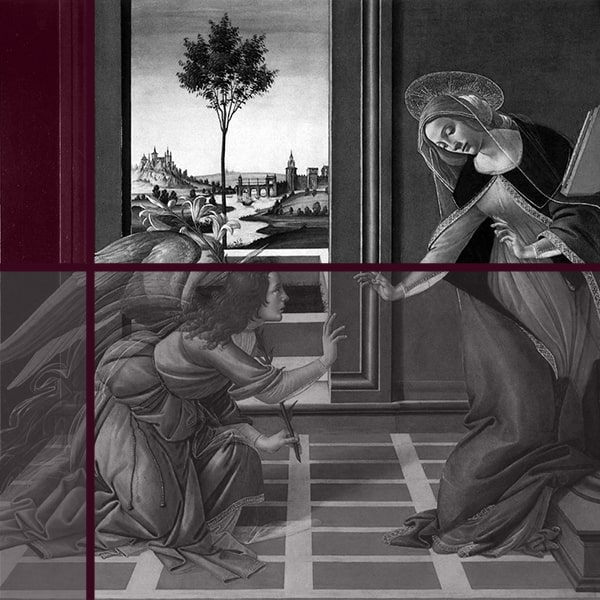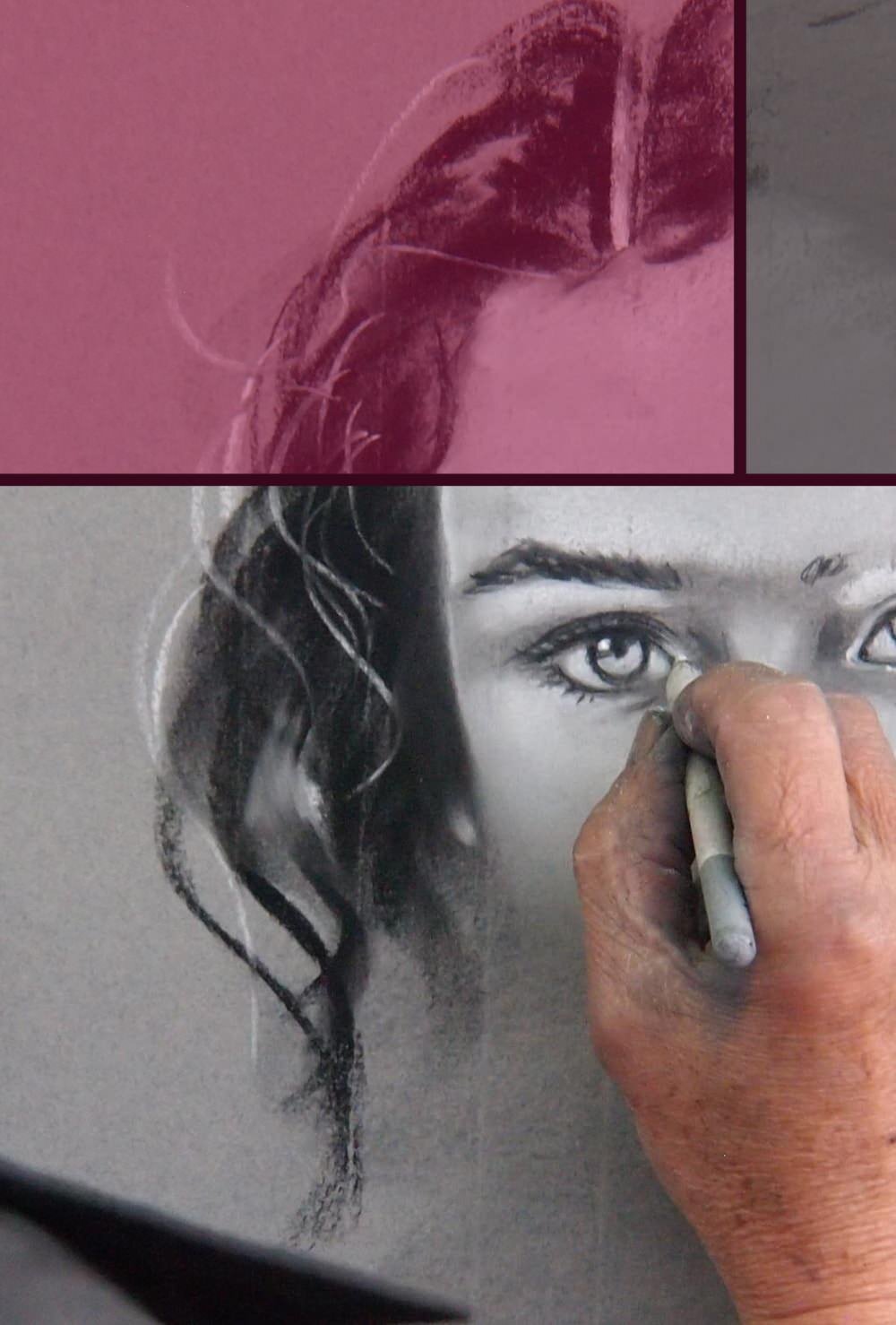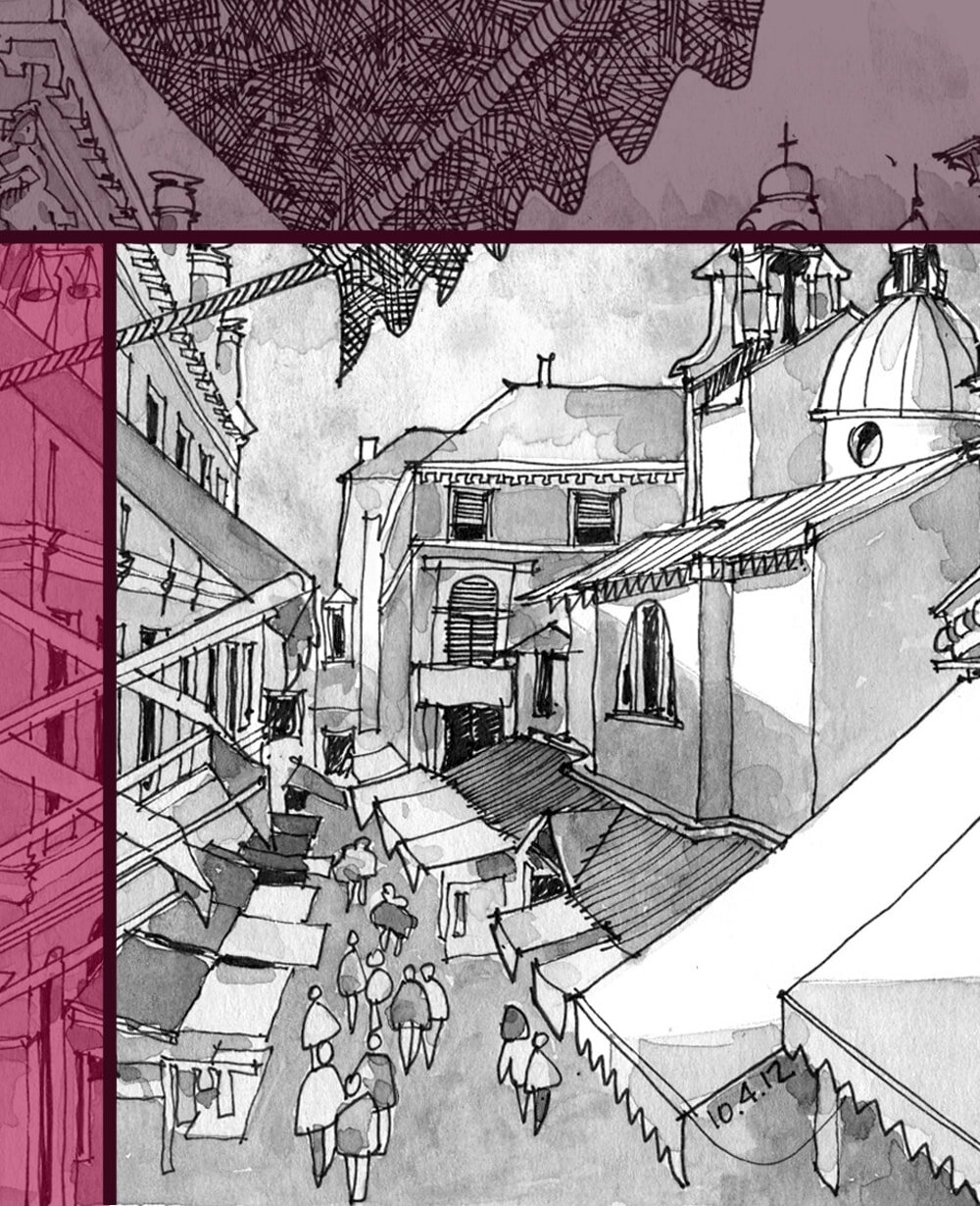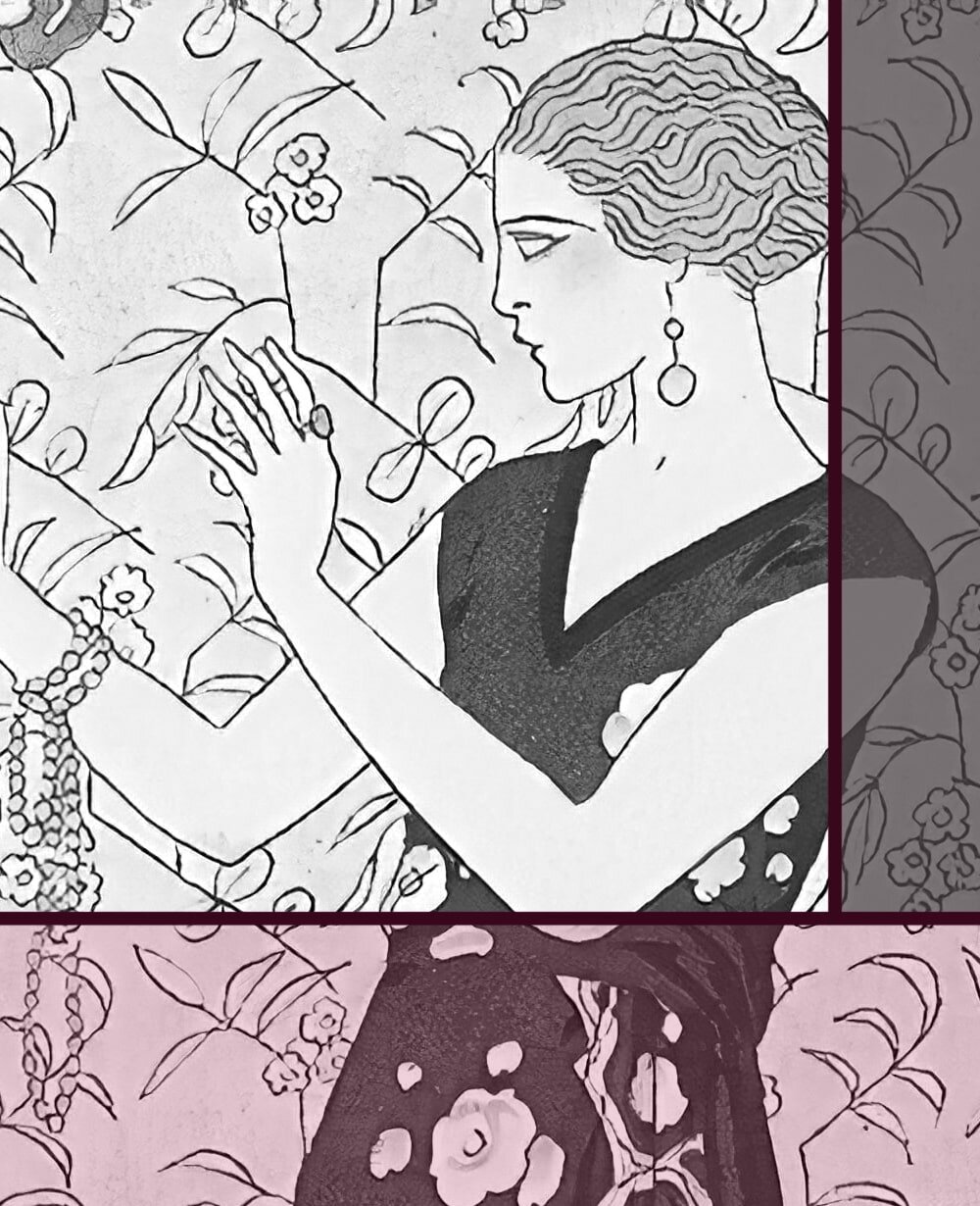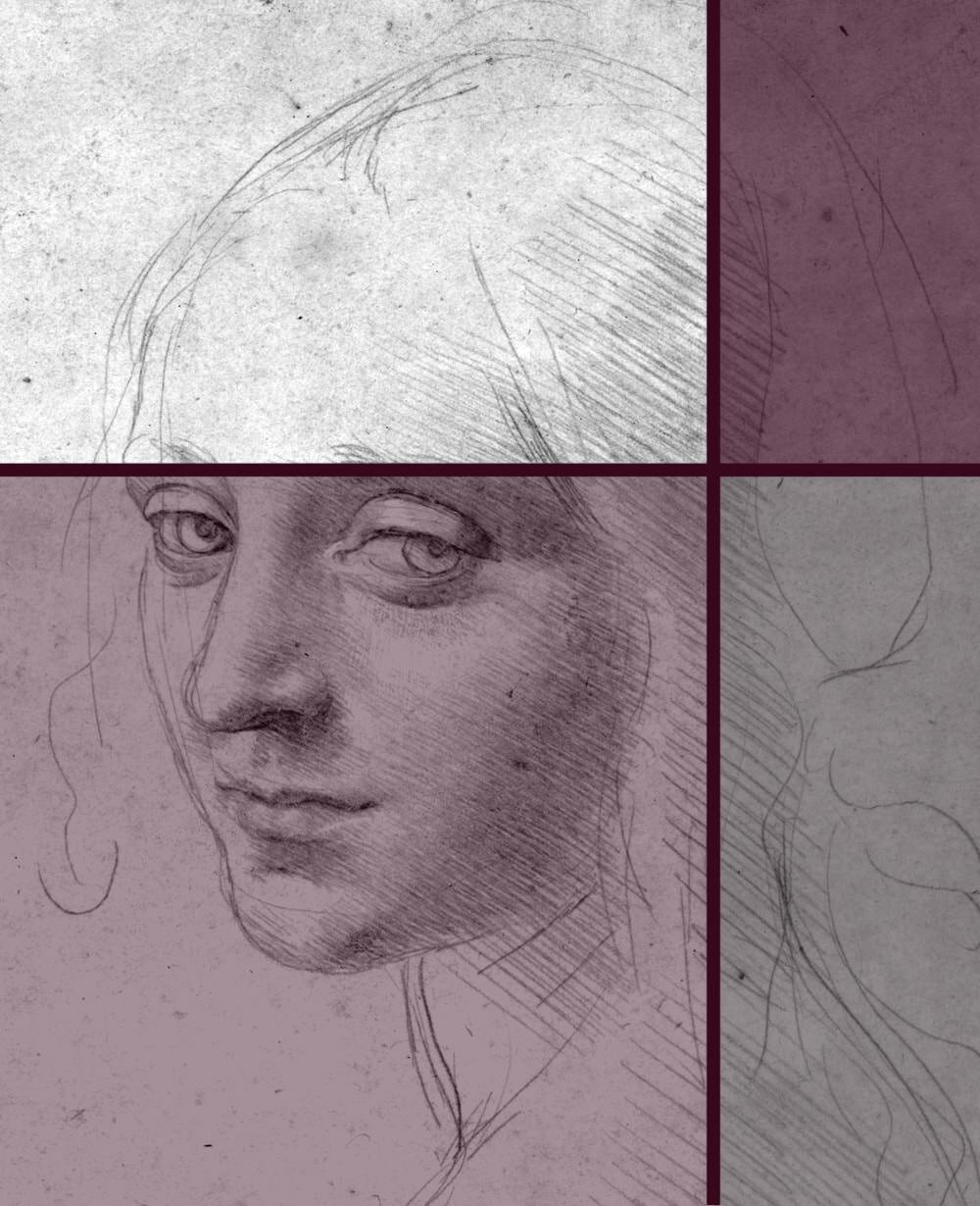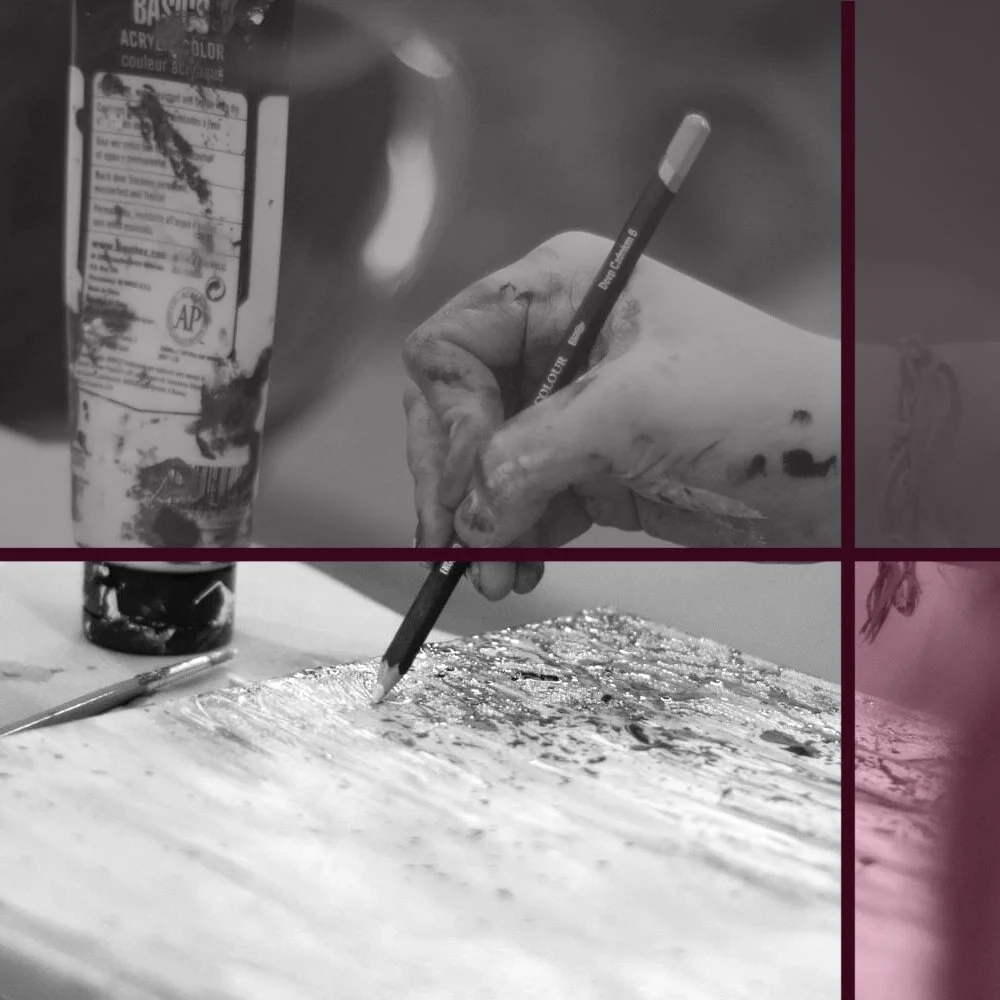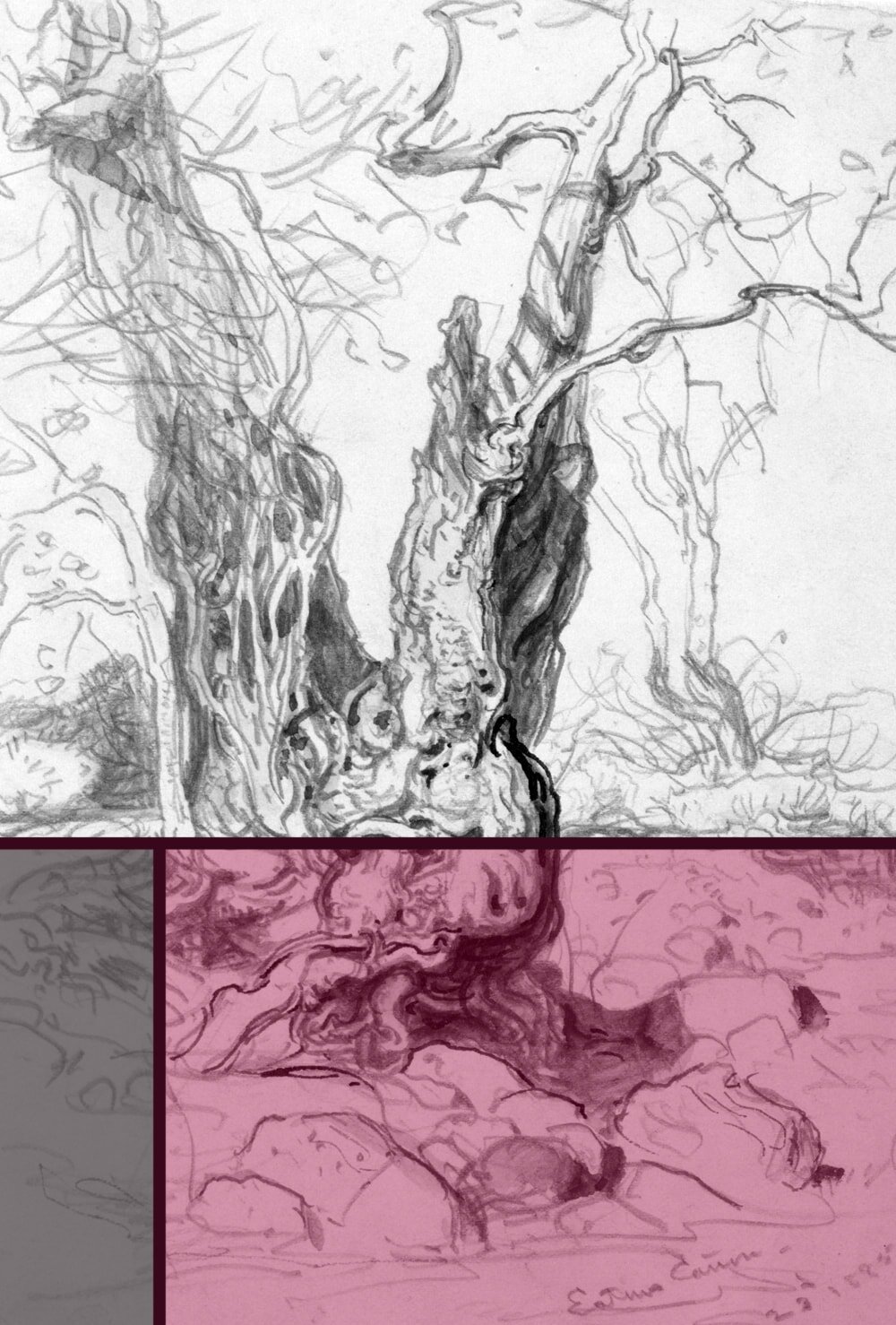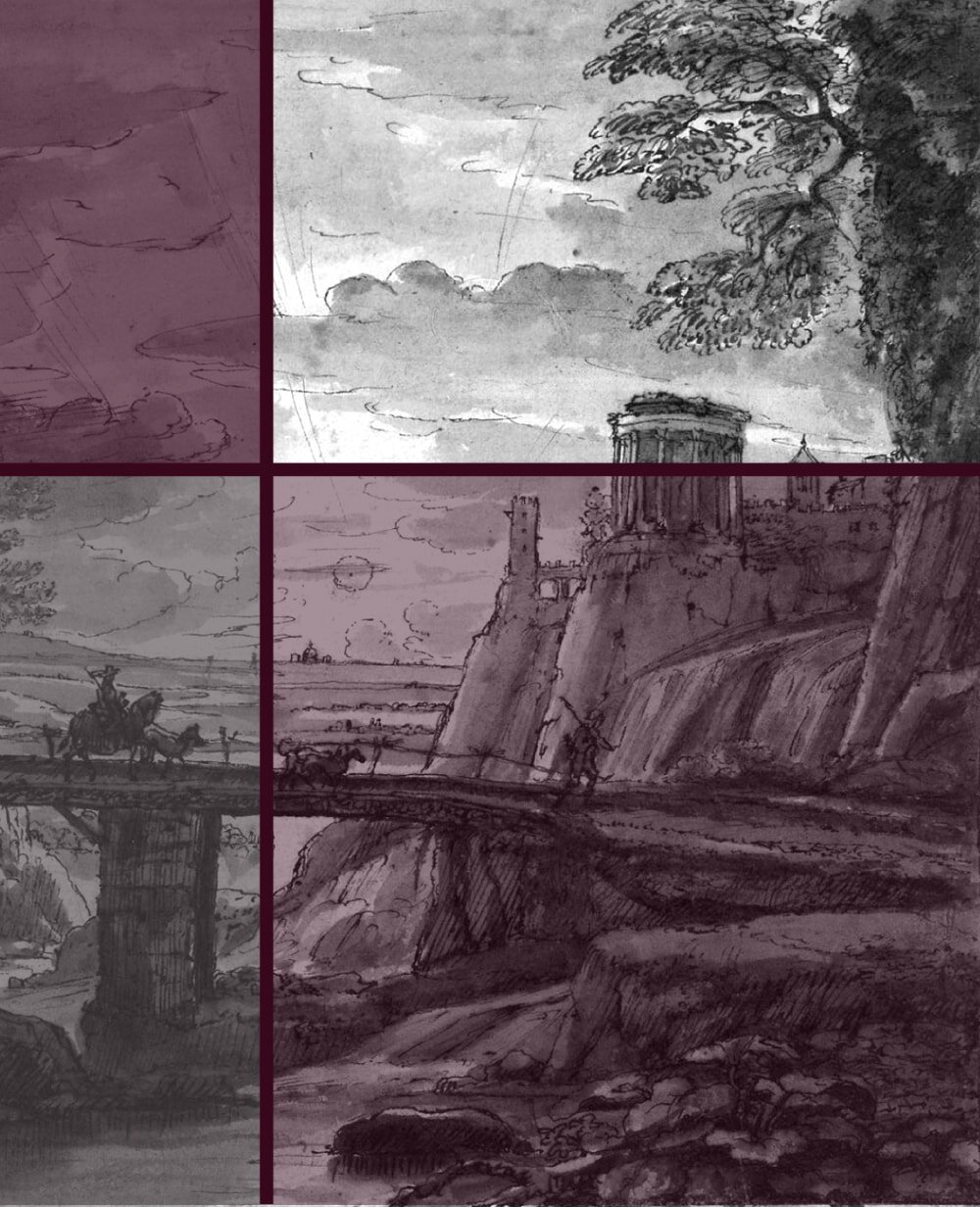How to learn Drawing in 2024 (it has never been easier)
Whether it’s a New Year’s resolution or a spontaneous idea, learning a new skill, any new skill, has never been easier.
There are many ways to learn these days and you can just pick the ones that work best for your personality and circumstances.
Some of us like studying in groups. Some prefer to learn alone until they’re ready. Others work best with a combination of both. You might like to learn by doing, just pick up the pencils and get to it. Or you might prefer to start with the theory and follow it up with practical sessions.
Everyone is different, and everyone learns differently. Good thing that this is no problem in our time and age.
If you know yourself, or if you’re willing to get to know yourself better, you can create a learning schedule perfectly matched to your own preferences and learning style. And that will help you succeed a lot easier, no forcing or struggling needed.
Tutorial books
This method of learning a new skill is a classic for a reason. Granted, it’s not advisable for every new hobby. I very much doubt you can teach yourself martial arts or singing, just from a book. But for drawing, this works just fine.
It’s especially popular because it’s cheap (cheaper than a course, anyhow), you can start right away, and you don’t have to leave the house for it. That’s great for introverts that prefer not to join a class, or for everyone who lives too far away from the next art school.
All you need is a couple of good tutorial books, ideally written by artists that have experience in teaching. It’s all too easy to expect a certain skill or understanding from others because you’ve had it for so long, so it’s best if your tutors are used to instructing beginners.
You’ll definitely want to use more than one book, too. As said, it’s easy to forget to mention things when you’re a fully developed artist, especially within the confines of a book.
The best way to learn drawing from tutorials is to work with at least 2-3 comprehensive books, written by artists that have teaching experience.
Personally I have used a combination of Artist's Drawing Techniques and The Complete Book of Drawing, alongside more specific books on certain topics I found challenging, such as The Perspective Workbook.
However, there are limitations. Due to the missing fixed schedule that comes with, for example, a physical drawing class, you need to be very disciplined. Otherwise you’ll do lots for the first couple of days, a little after that and then the books will end up catching dust on your shelf.
There is also no actual tutor around to look over your work, give you specific advice and answer your questions.
For these reasons I recommend using books exclusively only in the very beginning, perhaps when you’re still trying to decide if it’s a hobby you want to stick with, or you want to get the very basics down first.
Afterwards, it would be best to join the occasional weekend-workshop at the nearest art college or book an online course.
Blogs
A good art blog, dedicated to drawing for beginners, can be a fabulous way to improve your own skill and learn about new techniques, tips and tricks. Well yes, I am obviously a bit biased here. But even I will admit you’ll need more than just the blogs. The main reason for that is that blogs are never comprehensive and rarely chronological.
You’ll find a lot of super useful bits and bobs here and there, many great exercises and tutorials, but they’ll not usually lead you through the entire process of learning to draw from A to Z.
Because of that, I personally use blogs as a top-up of sorts, a welcome extra to look up very specific skills or have topics recommended that I didn’t even know I was interested in.
Blogs are perfect as an ‘extracurricular’ activity, to find specific information, motivate you and give you ideas.
Feeling a bit unenthusiastic this weekend? No problem, just read a list of all the amazing Things you can do when you’re Good at Drawing. Got bored with the exercises in your tutorial books? Any good art blog will have a section with exercises for beginners that regularly gets new entries.
Do your books only have a short chapter on composition but you’d like to learn more? That, too, can easily be looked up through the search function of your favourite blog. You get the idea.
But if you are serious about learning to draw, you will need to combine your daily blog reading with one or two other options on this list. That makes sure you’re not missing out on important information or jumping ahead of yourself and lose motivation because of it.
YouTube
YouTube is truly an amazing platform. Not sure how to do a pearl stitch, fix your boiler or add images to a Word document? The information is most probably out there, for free.
If you want to learn about shading, figure drawing or perspective, it’s also right there for the taking. I love watching videos of artists creating a drawing from beginning to end or show you how to sharpen your pencil the ‘proper’ way.
I sometimes stay an hour or more on the platform, just clicking from video to video and spending a bit of time with various drawing topics.
But I am also aware of the limitations of YouTube as a teaching option. There are high-quality videos created by experienced instructors that’ll teach you a great deal, but you’ll first have to work your way through a mountain of less useful ones.
Creating a high-quality tutorial video is difficult and time-intensive, so you won’t find a complete A-Z drawing course for free on YouTube.
The really good tutorials will almost always be only about a few selected topics or used as an introduction to a paid course. Because making a good drawing tutorial video takes time, experience and quite a bit of technical know-how.
Just as with blogs, I recommend using YouTube as an addition, for a change of pace, rather than as your only teacher.
Group classes
The most common method of learning a new skill is simply joining a class. For adults, these are often courses organised from local art colleges. They tend to run once or twice a week, either in the morning or evening (after normal working hours) over a period of several weeks.
Usually these are taught by experienced art tutors, quite often by ones that also teach University courses. Which is brilliant for you because they’ll have a lot of experience and will be able to anticipate your questions before they arise.
Live classes come in all shapes and sizes and should be part of any beginner’s art education whenever possible.
Class sizes range from small to quite large, sometimes with 30 people or more. If group learning is not your thing, this option might not be for you. Such big classes can be a bit exhausting and your one-to-one tutor time will also be cut quite short.
Another thing to consider is that the nearest art school might be far away, so additionally to the course fees you’ll have to calculate commute and time to get there and back.
That said, having the opportunity to learn from a long-standing tutor, being able to ask questions and have them correct your work is invaluable.
Luckily there are often also shorter options available. Most art colleges schedule regular walk-in life drawing classes for a couple of quid that you can attend as and when you find the time and are in the area.
Every now and then they’ll also offer crash courses that run for one or two days, mornings to late afternoon, usually on weekends.
Or, if you want to go all fancy, why not book a drawing retreat? They’re quite expensive, but it can be super relaxing to spend a week or two amongst like-minded artists, just concentrating on advancing your skills, no distractions.
Private classes
If group-learning is not for you and you’d prefer some more personalised tutoring, you can look for your very own teacher, of course.
There are a few websites where artists and teachers can offer their services, such as Tutor Hunt.
Naturally you can also simply post a request on Craigslist or in the papers, or you can pop by your local art college and ask if they know someone. Quite often they’ll have some part-time professors or degree students that might want to earn a little extra money teaching you all they’ve learned so far.
If you’re prepared to spend a little more in the beginning, a private tutor for a couple of sessions can be an excellent way to get to grips with the basics.
With this option you’ll get a lot of help that’s tailored to you personally, you can ask as many questions as you want, and the classes can be arranged to fit your schedule.
Similar to all private lessons you’ll have a lot of incentive to practice. Since your tutor takes the time to ‘help you out’ (even if you pay them), you wouldn’t want to disappoint them with a slothful attitude.
If money is not an object (or you’re a lucky duck who knows someone that’d help you for free) this is a great way to learn drawing, especially in the beginning until you’ve got the basics down and know how to correct your own work.
Online courses
These are my personal favourite for just so many reasons and I’ve taken a great many online classes over the years.
They are as comprehensive as a physical course at an art college, but of course there’s neither the need for travel nor the group-learning aspect. And they can be studied around your schedule, because they’re (usually) pre-recorded.
This is the perfect option for anyone who has a busy, unpredictable schedule, who lives just a little too far away from the nearest art college or who prefers to learn a new skill on their own.
Online classes combine the best of many worlds. They’re as comprehensive as live classes but don’t require you to travel.
Thursday lunchtime and you’ve got half an hour before you have to get back to work? Get some online studying done. Is it raining cats and dogs outside and the train tracks are flooded? Good thing you don’t need to travel to your course.
In most cases these classes include written material as well as videos, little quizzes or other incentives. They have more content than a book and it’s often easier to understand something when you can see (or hear) someone explaining it.
One downside however is that, contrary to live classes, you don’t usually have the possibility of contacting your tutor and asking them questions about your work specifically. But combine this way of learning with one or two live art college weekend-classes and you’re all set.
Good online courses are not cheap though. While there are websites that’ll offer classes for under £20 (on fake ‘discounts’) these are very rarely as comprehensive and high in quality as you probably want.
It takes a huge amount of time and technical knowledge to produce a really good online class, so as a rule of thumb they should cost about as much as a physical course.
Copying
Copying other artists’ work is something each and every beginner should be doing. Don’t get deterred by thinking it’s at best ‘unoriginal’ and at worst ‘stealing’. It’s research. As long as these copies are for practice only, of course.
If you can find one or two artists you admire for their special way of drawing (such as Luis Royo and Rembrandt for me) get yourself a few of their drawings, for example as postcards, illustrated books or as simple printouts. Then study their work thoroughly. Look at it until you see all the little details and you understand how they use lines, pressure, colour. Once you do, try to draw what and how they did.
Tracing and copying artwork you like, to learn the skills and techniques, is no different to reading other authors’ books if you are a writer.
This is not something that you’ll likely manage to do well in the beginning. However, practising this once in a while offers you invaluable experience and understanding of techniques and composition.
Once you know how other artists manage to produce work as fabulous as what you see in front of you, and you’re able to follow their ‘lead. It’ll help you to master the skills you need in order to develop your own style over time.
After all, you want to be as good as these artists, not be them.
Online challenges
The hardest thing about learning a new skill, now as well as hundreds of years ago, is surely to work through the ‘meh-phase’ and stick with it until it has become either habit or you’re getting so good that you don’t want to stop.
Until that point there will always be a lot of failure. And that gnaws away at your self-confidence and motivation. Pop by my article 8 Ways to stay Motivated during Long-Term Projects for some remedies for that.
Practice makes perfect, but repetition can also be terribly dull. And of course, we live busy lives. We’ve got full time jobs, children, social engagements. All of these factors can make learning a new skill seem like a chore, no matter how excited we were about it in the beginning.
To quote Andrew Price from his amazing YouTube lecture on The Habits of Effective Artists: “The very last thing we want when we get home is to burden ourselves with yet another chore”.
In order to counteract this little devil on our shoulder that tells us that it’s just not the right time at the moment or that we don’t have the talent, we have to learn how to trick ourselves.
There is just no better way to manipulate yourself than a nice little (online?) challenge, to provide some encouragement with a pinch of group pressure.
For more tips and tricks visit my article on How to avoid Common Pitfalls when taking up a new Hobby.
Did you enjoy this article or feel like you have anything else to add? Feel free to leave me a comment below!
If you like this post, please share it, so others may like it too!
